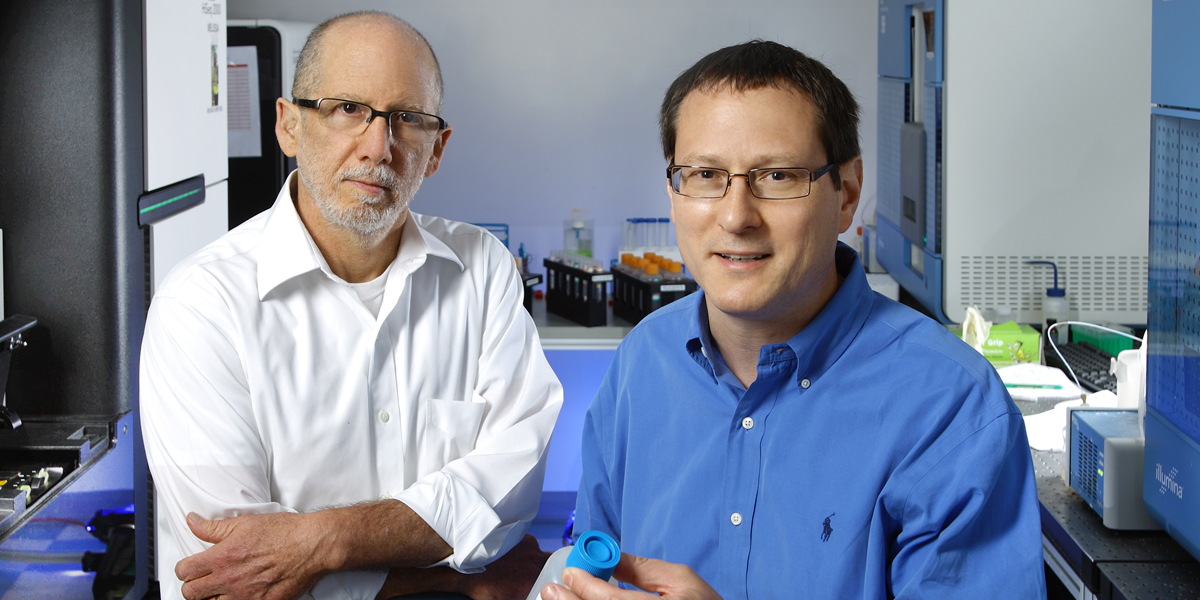To catch a killer
New method can detect uterine or ovarian cancer through routine Pap tests.
Georgios Papanicolaou invented one of the first tools to detect cancer at its earliest stages, the Pap Smear. When he made his discovery in 1928, Papanicolaou knew that the early detection could save the lives of women with cervical cancer.
Now, many decades later, the Pap smear is used routinely to test millions of women each year. But Papanicolaou also saw even further into the future. He speculated that the procedure could be used to detect cancers of the uterus and ovary because cells would slough off of their tissues into the Pap smear.
Last year Bert Vogelstein, Ken Kinzler and their colleagues at the Ludwig Center at Johns Hopkins put Papanicolaou’s idea to the test. The result is the PapGene test, a genetic approach to detecting ovarian and endometrial cancers using material collected during a routine Pap smear. If the test is successful in large studies, it could put a dent in the more than 200,000 deaths caused annually worldwide by these two cancers. The team’s findings also showcase Ludwig’s commitment to supporting research focused on early cancer detection and prevention – a major effort funded in part by the Conrad N. Hilton Foundation.
“Many of the gains in cancer research in the next decades will come from early detection and prevention, rather than from curing advanced cases,” says Vogelstein.
The PapGene test emerged from a deep understanding of the mutations that drive cancer, which has long been a research focus at Ludwig Johns Hopkins. In their study, the researchers assessed Pap smears to detect DNA mutations associated with uterine or ovarian cancer. They successfully identified cancer in all the women in the study with endometrial cancers, and in 41 percent of those with ovarian cancer. From these initial experiments,they developed the PapGene test, a sequence-based assay that detects mutations in 12 genes frequently altered in these cancer types.
The researchers are now assessing how well the PapGene test works in a larger sample of patients. And they are investigating ways to better detect ovarian cancer, such as tweaking the device used for the Pap smear to collect more ovarian cancer cells.
Kinzler says researchers throughout the world have invited him to collaborate. “People are really excited about this,” he says. “This is something that hopefully can be implemented in the clinic in the foreseeable future.”
In a second ongoing project, Vogelstein, Kinzler and their colleagues are investigating ways to detect cancer by analyzing DNA in the bloodstream. Dying tumor cells release a small amount of DNA into the blood, and this |DNA can be detected using exquisitely sensitive technologies developed by the group. Most recently, they designed ways to comprehensively analyze tumor DNA for changes in chromosomal copy number and DNA rearrangements, alterations that occur in most tumors. They used this approach to detect cancers by examining blood from ten late-stage colorectal and breast cancer patients. The method could enable the noninvasive detection of nearly all cancer types.
DNA sequencing technology is still too expensive for everyday use. But costs are decreasing rapidly each year. Vogelstein is confident that at least one of the blood tests their group has developed will ultimately be inexpensive enough for routine clinical use. He and Kinzler have helped found the biotechnology company Inostics to carry this approach forward.
Vogelstein and Kinzler hope their research will one day have as much of an impact on cancer as Papanicolaou’s work. “We named our test PapGene in honor of Papanicolaou,” says Kinzler. “He pioneered the idea that noninvasive tests for cancer can save lives if widely implemented.”
